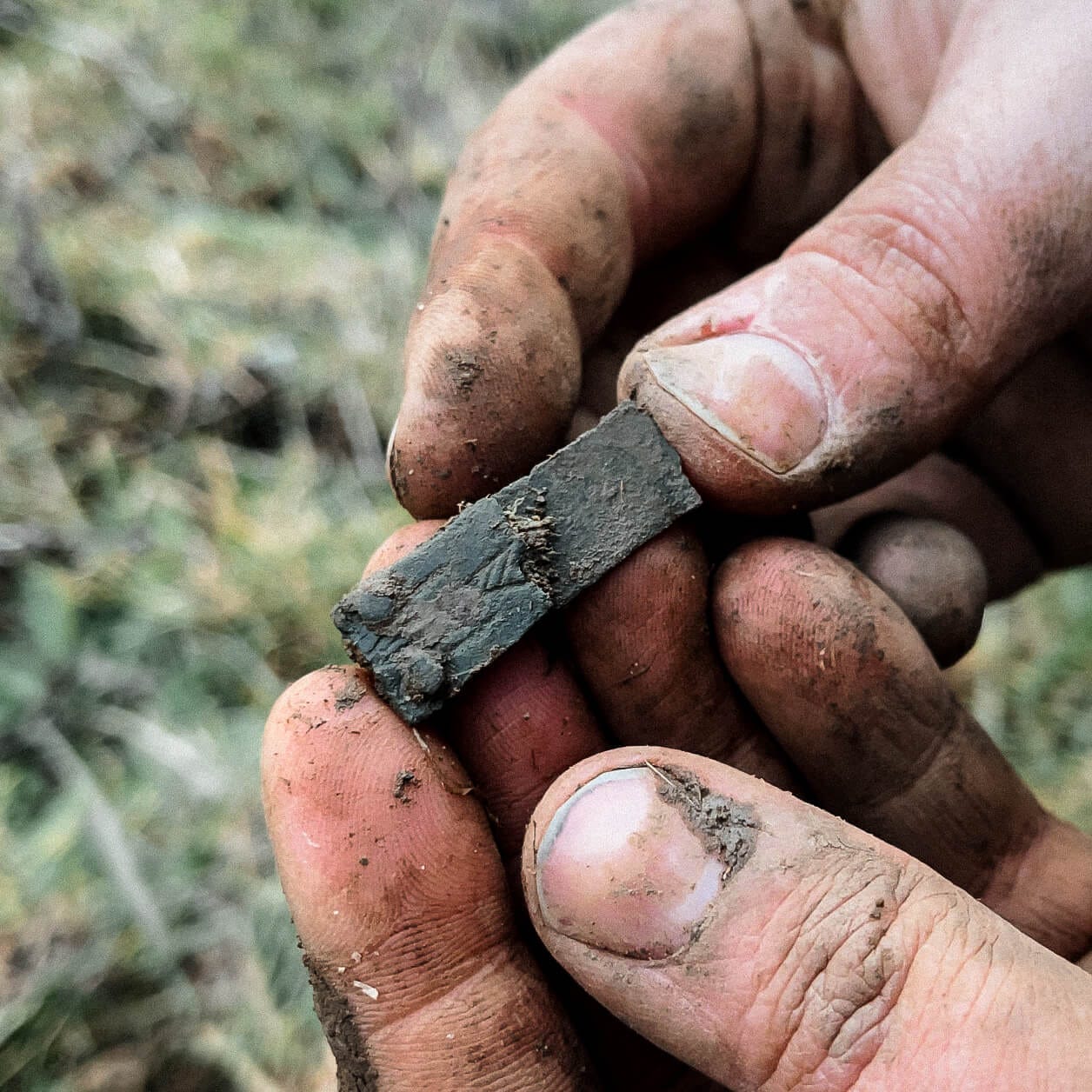This week, we were presented with a rare opportunity - uncharted territory - short grass on a small patch of the permission, normally neck deep in thistles and grasses, who knows what secrets this previously undetected location is hiding…
Medieval Chic
Digging through the weeds we quickly uncovered a world where what you wore determined who you were. This was England in the Middle Ages; a time of great change for the fashion world, but also one of strict Sumptuary Laws and a hierarchical social system that controlled the very cloth you could wear.
The Sumptuary Laws of 1363:
Lords and their families owning land worth £1000 annually
No restrictions
Esquires and their families owning land worth £200 annually,
Merchants and their families owning goods worth £100
Fabric worth no more than 5 marks for the whole cloth. Cloth of silk and silver may be worn, but women may not wear ermine or weasel fur and can only wear jewels in their hair
Servants and their families
Fabric worth no more than 2 marks for the whole cloth. No gold, no silver, embroidery, enamelware or silk. Women may not wear a veil worth more than 12d (pence)
Those working the land without 40 shillings of goods (Carters, ploughmen, drivers of ploughs, oxherds, cowherds, swineherds, dairymaids etc)
Only blanket and russet cloth, with belts of linen
These Sumptuary Laws were first introduced in the 13th Century, a result of the growing popularity of tailoring and the prospering cloth trade, which saw fashion taking a step towards individualism. Men and members of the aristocracy were sporting new, tighter garbs as tailoring developed during conflicts such as the Hundred Year’s War, requiring military clothing to be close-fitted under armour. It wasn’t long before this caught on with the general public, and for the first time, there became a greater difference between men's and women’s clothes.
However, the King and his Parliament believed people were spending far too much on their clothing. The growing wealth within the lower classes due to a rise in trade and the aftershocks of the Black Death meant some people were dressing above their station. These new laws reinforced the social order. But a typical outfit of the ‘Middle Ages’ generally consisted of layering at least six different garments; there were under-tunics, outer-tunics, capes, hats - the list goes on - and within all of these garments were plenty of opportunities for individual expression, even if you were restricted by what cloth you wore. This came in the form of metal dress accessories, and there was a huge variety to choose from.
How to Accessorise
Belt fittings, in particular, were all the rage. The humble belt, or girdle was worn by all levels of society; regardless of class, age or gender. Arguably this was one of the most important pieces of dress; providing a key expression of identity with embellishment and (possessing a lack of pockets) functionally as a point to hang purses, knives and small items.
So it’s no surprise belt fittings are one of the most commonly found decorative metal artefacts from this period. On this dig, we were gifted two!
D-Buckle 1250 - 1500 AD
The most common type of buckle used during the 13th and 14th Centuries.
The buckle and belt girdle were so important that they were also popular gifts, and as will-writing increased, they were a popular choice for passing on to relatives. Henry III was a particular fan of the girdle, gifting a huge number of them during his reign as monarch.
This period is when we see the rise of the buckle, as developments in production techniques make it widely available to the masses. With fashion trends shifting towards a more tailored figure, the buckle became incredibly popular, helping to accentuate the waist. This particular example, with a narrowed strap bar, is a better-quality piece that would have most certainly been found on a personal dress.
Decorated Strap End 1250 - 1500 AD
These were attached to the end of belts to prevent the strap from fraying and to aid in passing through a buckle loop, the presence of a strap end indicated a relatively high status. They too were also affected by changing fashion trends, with ridiculously long ones being a popular choice of the 13th Century.
The cheapest strap ends available would have been simple pieces of folded metal held together by a single rivet with no decoration. But this one, possessing a delicate, linear geometric design, multiple rivets and careful intent behind its manufacture - is rather special.
Other Accessories Available:
Brooches: used to fasten tunics
Clasps: an alternative form of buckle used to fasten straps
Strap Loops: hold down the belt end which has passed through the buckle loop in the same way that modern belts have a loop of fabric
Decorative Mounts / Bars: primarily for belt decoration, but also to protect the strap from the buckle pin
Pendant Mounts / Purse Hangers: used to provide a point to hang small items from the belt
With the ever-changing weather and the call of spring not too far away, we hope to have another delve into this little patch of earth. We are certain more artefacts are waiting to be uncovered…












Great read girls, thoroughly enjoyed. 👌🏼
And yet at that time one could, having achieved the status of 'minor gentry' apply to the Royal College of Arms to one of their Heralds who for a price would along with your Crest provide a family history that linked you right through to sone or other Norman Knight! I also wonder why some people still do decorate themselves materially above their station.